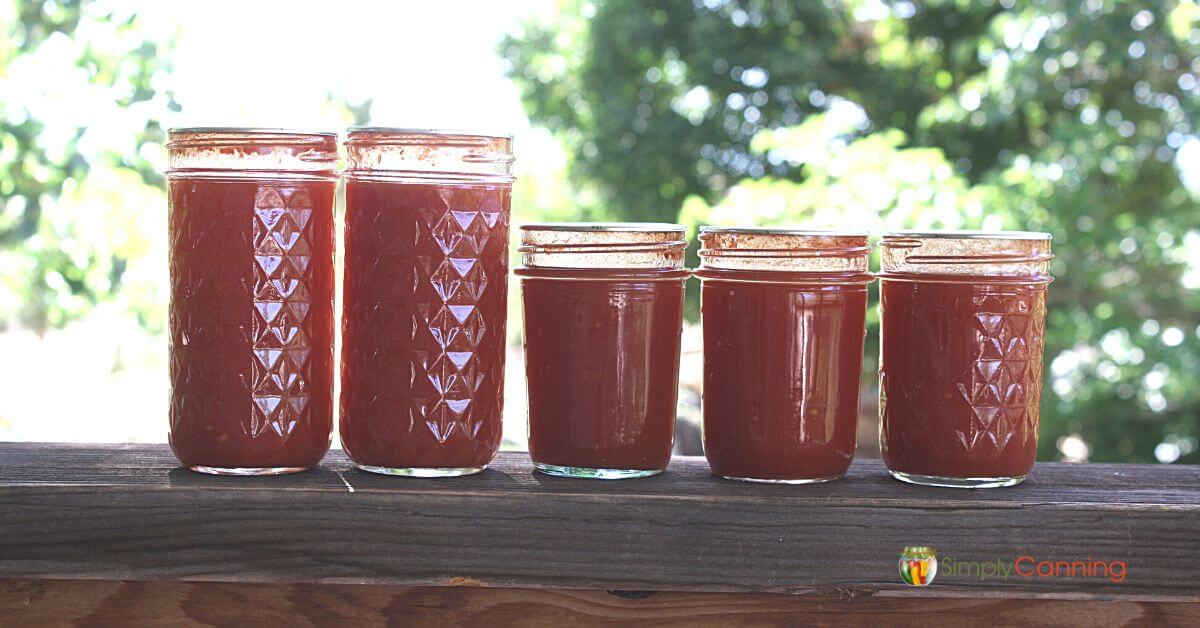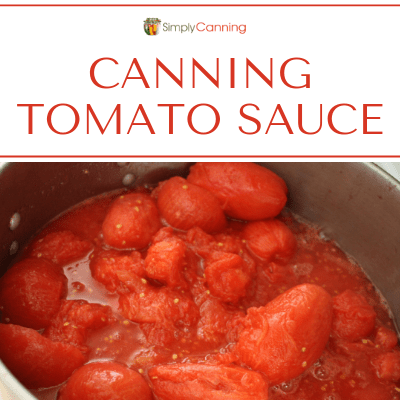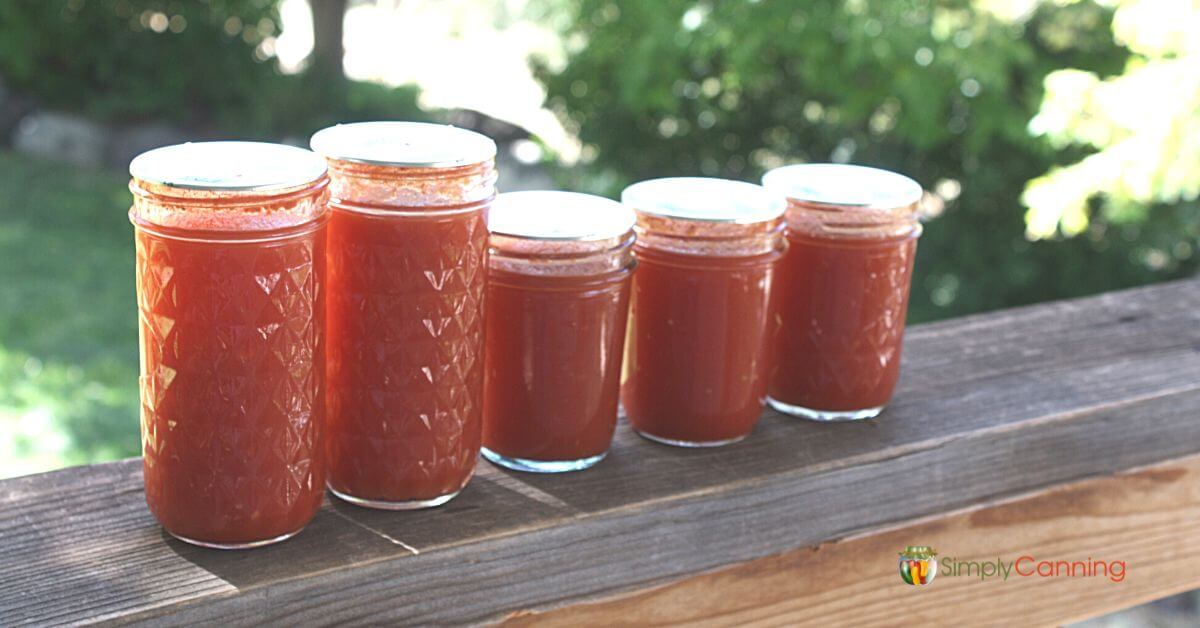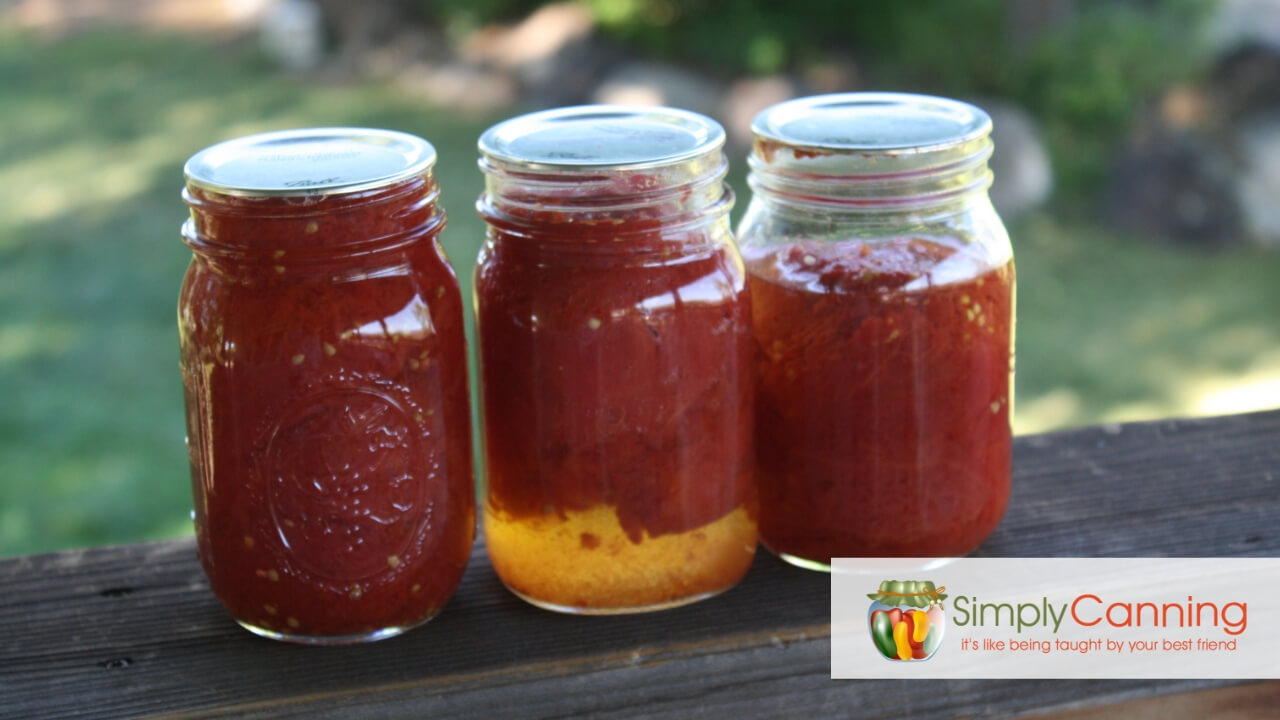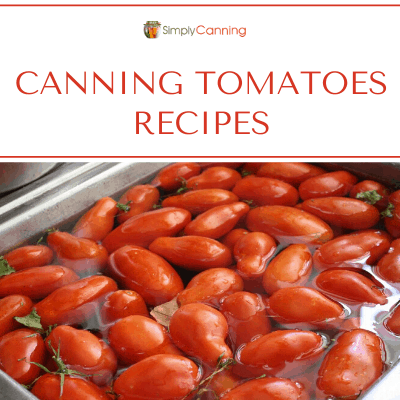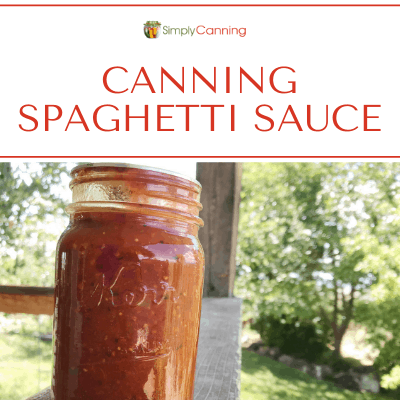Canning Salsa Safely: A Beginner’s Guide
This page may contain affiliate links. More Information.
Find out how to can your own homemade salsa recipe. There are some details that will determine if it is safe for shelf storage as it is written. By the end of this article, you’ll know how to adapt your favorite recipe to make it suitable.
The key to safely canning salsa lies in its acidity or pH level. The ratio of acidic ingredients to non-acidic ingredients is important in achieving the correct pH level for shelf-stable salsa. Too little acidity can compromise the safety of your canned salsa.
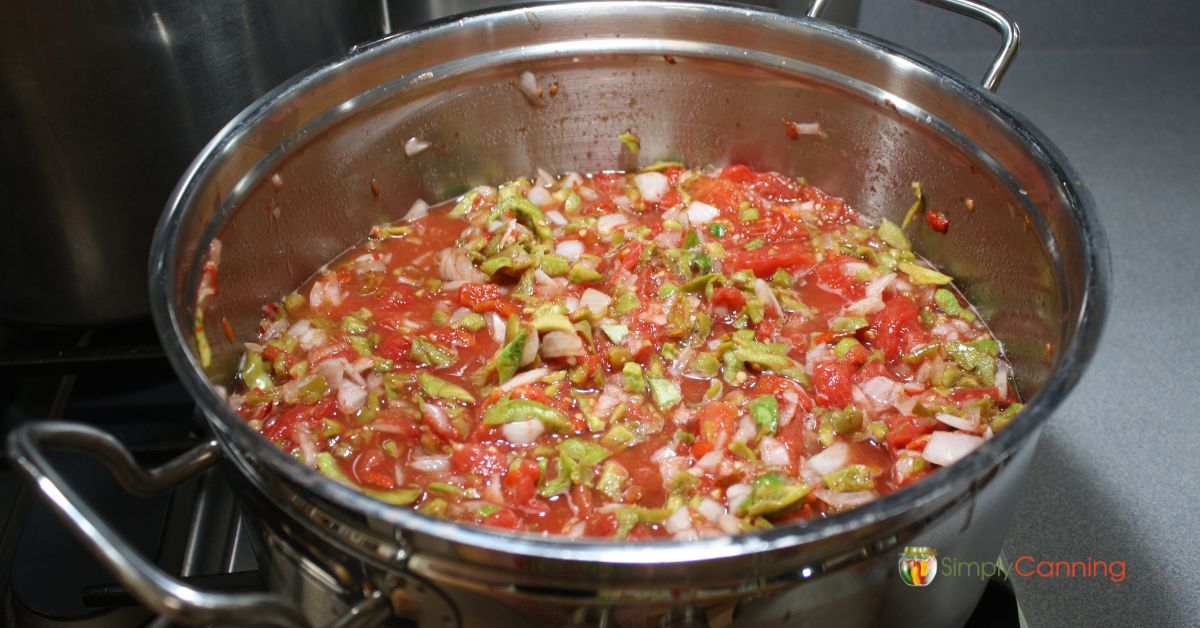
The Right Ratio
The acidity levels of your recipe determine the safety factor in a canning situation. You can make your salsa pretty much any way you want if you are eating it fresh. But that storage on the shelf part changes things up. To create the correct acidity, you need the correct balance (ratio) of acidic ingredients like vinegar, lemon, or lime juice, and ingredients like tomatoes, vegetables, (usually onion and peppers), and seasonings.
Since there are endless ways to make salsa, scientific testing all of them would be impractical. But keep reading! There are things you can do in your kitchen to make this work.
How to Adapt Your Recipe
The good news is, that there are a variety of safe tested recipes that you can use, and adapt to your taste preference. This is how I recommend you start. Pick one of those recipes that is closest to your recipe and adjust within a few parameters.
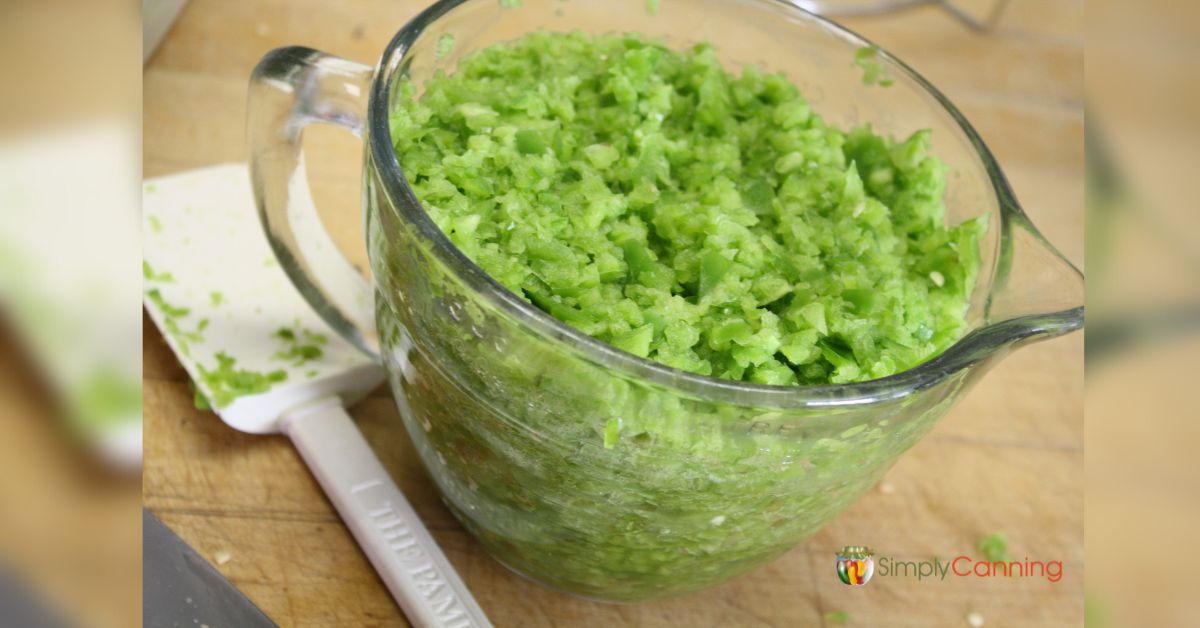
Ingredients and Their Impact on Canning Methods
Here’s a breakdown of some key ingredients in most salsa recipes. And how you can (or can not) adapt them.
Acids:
Vinegar, lemon, or lime juice are essential for acidity. These should not be adjusted; stick to the recipe’s recommended amount.
Tomatoes:
Tomatoes are a primary source of acidity, so their ratio to other ingredients is critical. These ingredients also should not be adjusted; stick to the recipe’s recommended amount. You’ll need to use peeled tomatoes.
Romas are a recommended variety as they are meatier, but you can use any variety of tomato. You can even use green tomatoes if you want.
Do not use tomatoes from frost killed vines. The freezing of the vines causes changes in the tomato acidity.
Choose paste tomatoes for a thicker salsa or slicing tomatoes for a runnier consistency.
Peppers:
These also should not be adjusted; stick to the recipe’s recommended amount.
You can substitute mild peppers for hot ones or mix them for your desired level of heat.
Avoid increasing the overall amount of peppers; maintain the balance prescribed by the recipe. For example, if a hot salsa recipe says, 2 jalapeños but you want to substitute green bell peppers to make it mild, keep in mind that jalapeño is much smaller than bell peppers. Use an amount that would be equivalent to the prepared recipe. So cut up enough bell pepper to be an equivalent amount to the jalapeño.
Onions:
Any type of onion may be used, but again do not increase the recommended quantity in the recipe.
Fresh Seasonings:
(note, this is fresh herbs not dried) Stick to the recipe’s recommended amount or you can leave it out. For instance, if you don’t like cilantro, you can skip that ingredient. If you want more cilantro, you should not add more fresh before processing. You can add it when you open the jar to serve it.
Dried Seasonings:
Dried seasonings are more adaptable. You can add or take away dried seasonings to create the flavor you want. Remember dried seasonings may get stronger when they are processed. So test things out with small batches.
Other ingredients:
Follow the recipe without adding any extra fresh ingredients. Do not incorporate different vegetables or fresh herbs beyond what the recipe specifies.
How to Process Salsa
Salsa can be canned in either a water bath or a steam canner (not a pressure canner, this steam canning is different) I’ve got 2 helpful guides that you might need: “Using a Water Bath Canner” and “Steam Canner.”
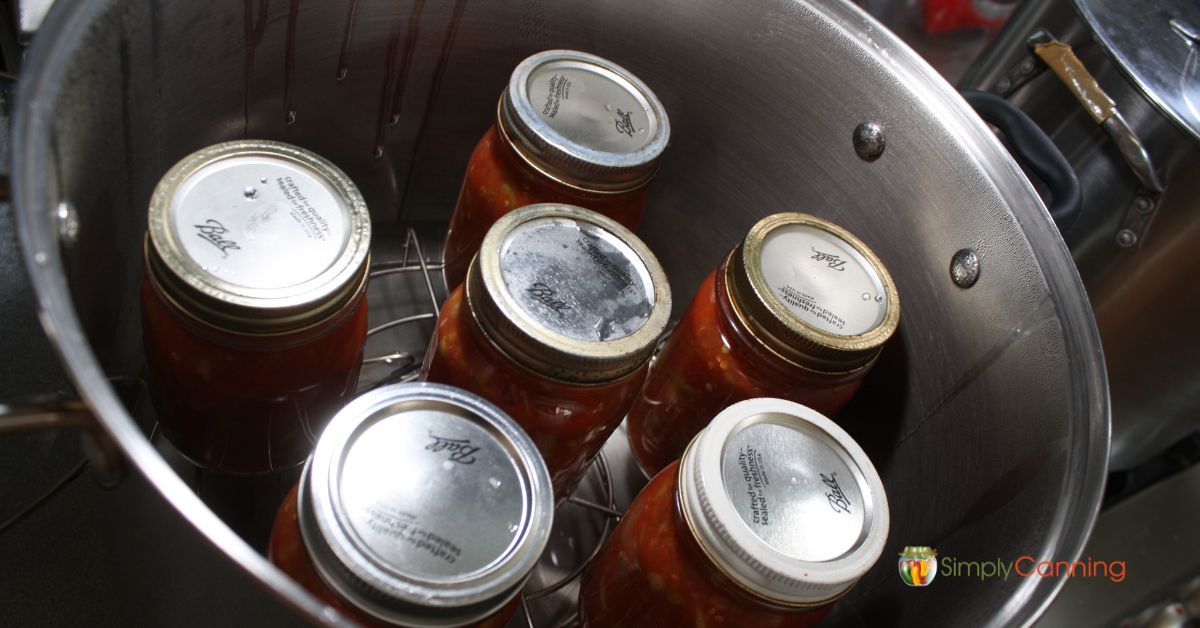
Exploring Other Options
If you really really don’t want to change anything about your recipe. Then I don’t recommend canning it. There are alternative ways to preserve or just enjoy your homemade salsa:
- Freezing: Prepare your salsa and freeze it instead of canning. Be aware that freezing can alter the texture of your salsa, but it’s a safe storage method.
- Refrigeration: Make just enough salsa to store in the fridge and use within a reasonable time frame. This eliminates the need for canning or freezing, though you won’t have the long shelf life of canned salsa.
How to Thicken up Home Canned Salsa.
The biggest complaint my family has for both salsa and spaghetti sauce is the consistency. Commercial products are just thicker, and pastier. Do not try to thicken your sauce before you can it. Follow the recipe directions.
You can add a bit of cornstarch when you open the jar. Tomato paste or tomato powder works as well. All this is added after you open the jar to serve it. It thickens the juice and gives it a similar texture to commercial products.
Non-Tomato-Based Salsa Recipes
Before you go…you may already know this but, there are tested salsa recipes that are not tomato based. These recipes may have different ingredients. The same basics will apply. Do not change the ratio of vegetables, and acidic ingredients. You can adjust the seasonings.
And of course there are many homemade salsa recipes that are for eating fresh. A canning salsa recipe has specific requirements, a fresh one can be made however you like. Use lemon juice instead of vinegar, add several cloves garlic,
Frequently Asked Questions
Properly canned salsa can last up to 1-1.5 years when stored in a cool, dark place.
You will be disappointed if you freeze your tomatoes and then try to make salsa for canning purposes. Those tomatoes will be very runny with no consistency.
Separation can occur when you are canning most tomato recipes. The trick is how you cook it. Check this post for more details on issues that crop up with tomatoes.
The water bath canning processing time for salsa typically ranges from 15 to 20 minutes, depending on your recipe and jar size. You’ll need to follow the recipe for the specifics. And don’t forget that good recipes will include information on adjusting the time according to your altitude.
Roma tomatoes are recommended. Any paste style tomato will help your salsa be less juicy, but any tomato can be used as you prefer or as you have available.
Yes. The mixture will be heated as it is made. You can’t just combine all raw ingredients and put cold salsa in jars to be processed. The salsa needs to be hot prior to canning.
To my knowledge, there are no tested recipes for quart jars. Pint jars is all that is recommended. Having said that, you can go down in size. Just fill 1/2 pint jars and process them for the time for pints.
You can not just assume that you’ll increase or decrease processing time dependant in the size jar you use.
How to Can Salsa; General Guidelines
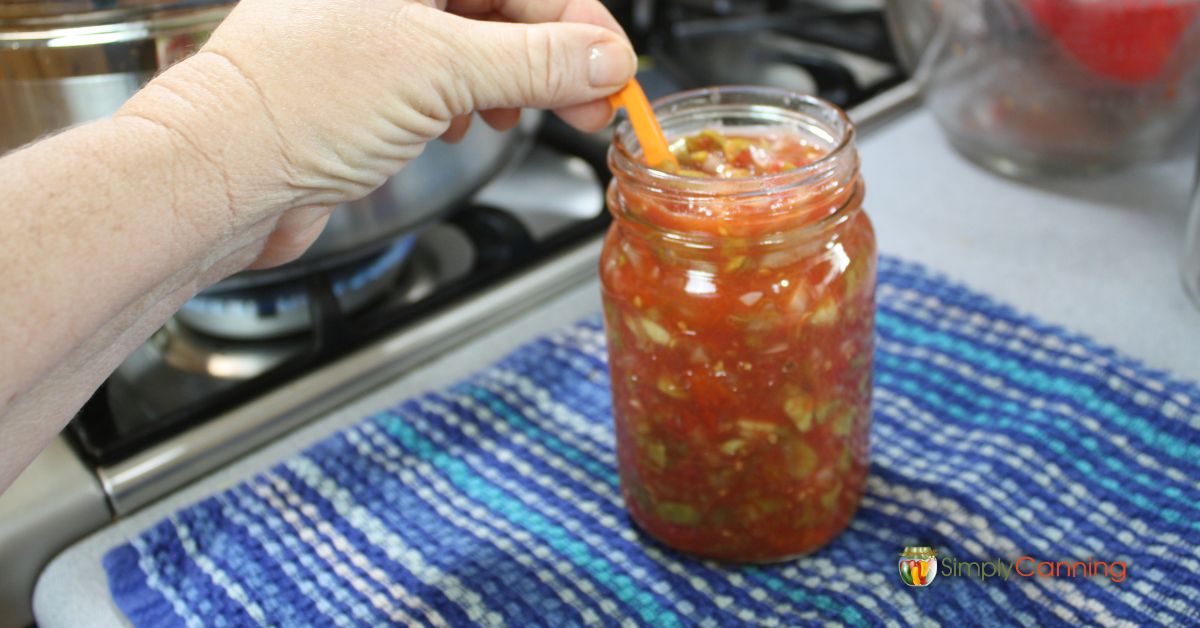
These are the basic steps on how to can salsa using a boiling water bath or a steam canner. This is not the actual canning recipe but it is assuming you’ve created a salsa that is safe for home canning. (read the article above if you haven’t already. 🙂). These are general guidelines only.
For more specific details you can see either
Water Bath Canning – how to use you boiling water canner.
Steam Canning – a great alternative to a water bath.
General guidelines on canning salsa in a water bath canner.
- Prepare Salsa: Make sure your salsa is hot and prepared according to a safe recipe.
- Prepare Jars: Wash pint size canning jars and keep jars hot.
- Prepare Canner: Have canner about half full of hot (not boiling) water.
- TIP: Keep your clean jars in the canner rack to keep warm until ready to be filled.
- Fill Jars: Fill hot salsa into jars, leaving ½ inch headspace. Remove air bubbles and wipe jar rims.
- Seal Jars: Apply lids, screw on bands fingertip-tight.
- Process: Place jars in boiling water canner, ensure they’re covered by 1-2 inches of water. Process for recommended time (follow recipe guidelines).
- Cool and Check Seals: After processing, cool jars. Check seals; store sealed jars, refrigerate any unsealed ones.
Always follow your specific recipe and processing time for safety.
Salsa is perfect for Steam Canning too.
Steam canning is quickly becoming my go to for high acid foods like salsa. If you have a steam canner here are some guidelines.
Some other tutorials you might need or want.
Canning Tomatoes in a pressure canner or a water bath.
Canning Stewed Tomatoes – uses a tomato, pepper, onion, celery combination.
And just for fun, did you know you can pickle green tomatoes?
Sources: National Center for Home Food Preservation
https://nchfp.uga.edu/publications/uga/sensational_salsa.pdf
https://nchfp.uga.edu/publications/nchfp/factsheets/salsa.html

